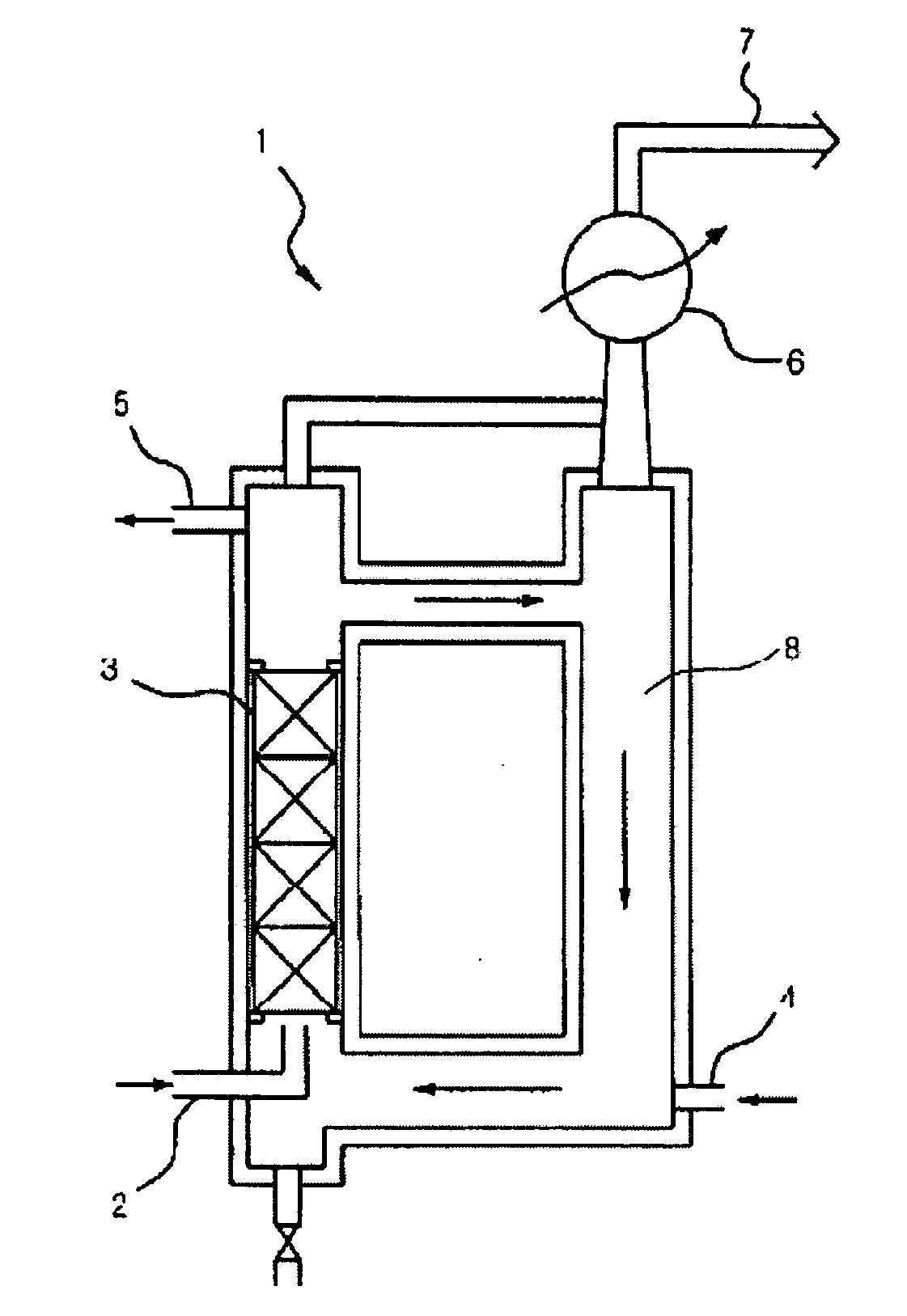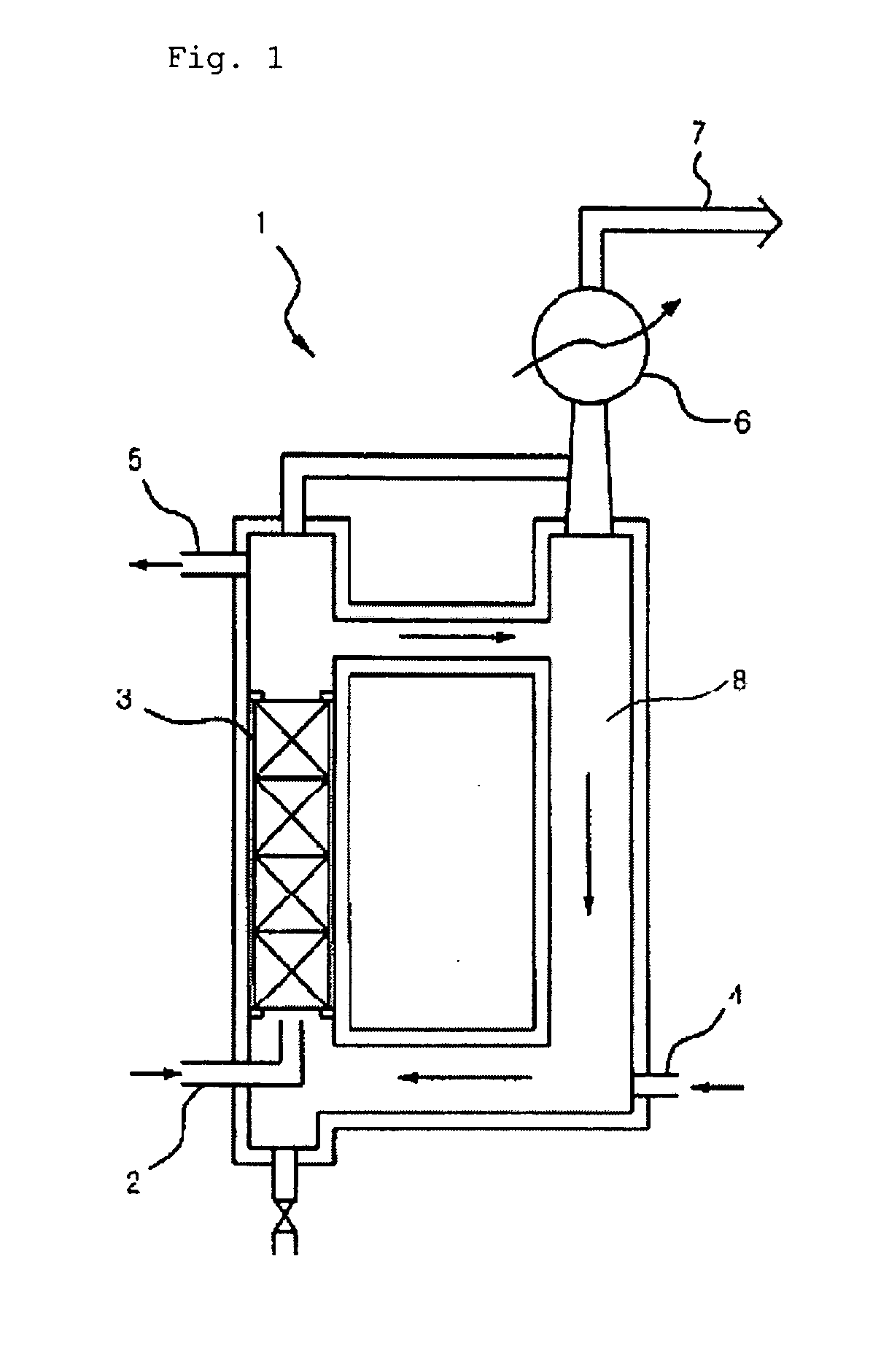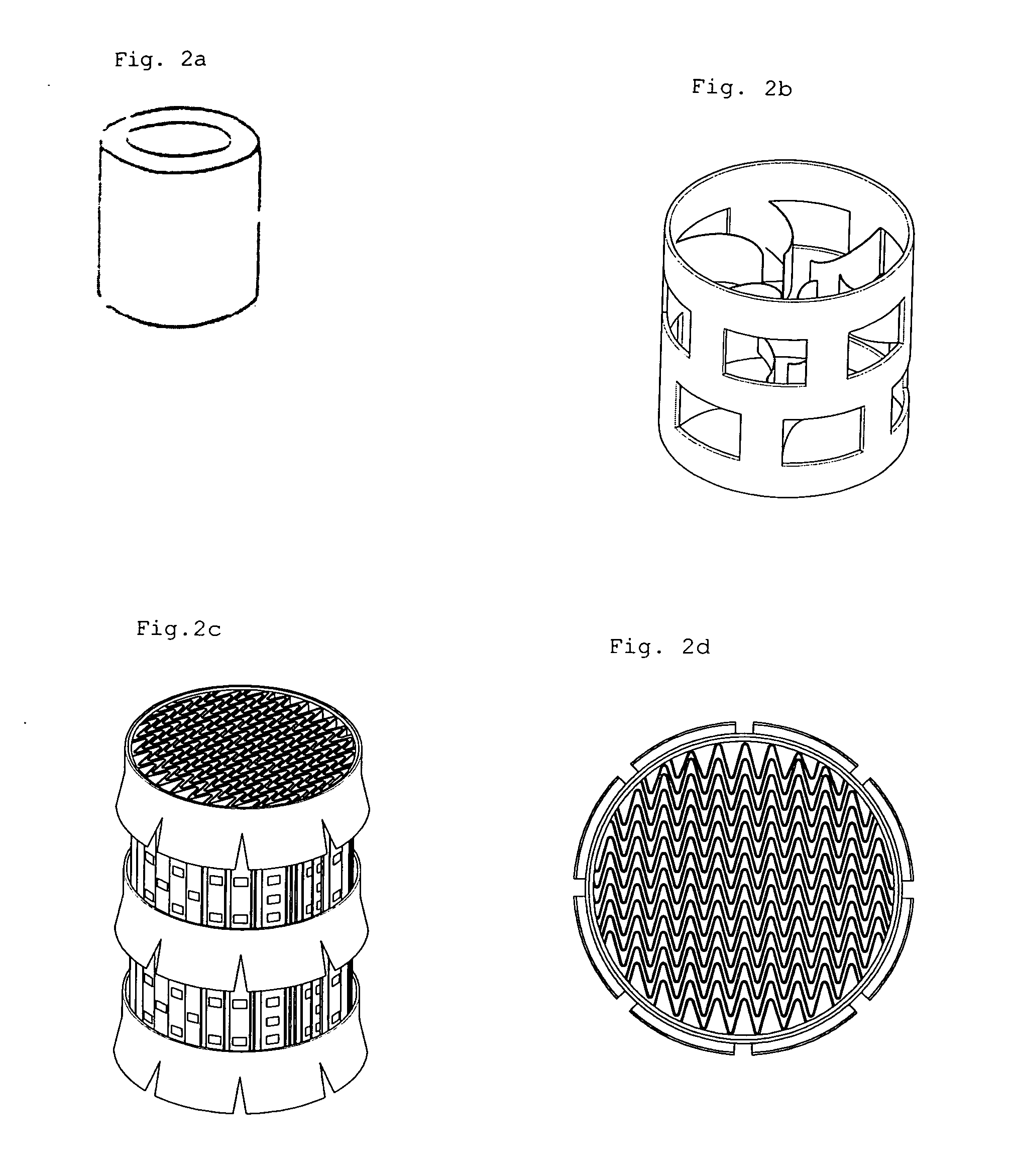Manufacturing method and apparatus of 4-fluoroethylene carbonate control system of autonomous intelligent distributed control modules
a technology of intelligent distribution control and manufacturing method, which is applied in the direction of products, reagents, organic chemistry, etc., can solve the problems of deterioration of ec, difficult to meet the requirements of production, and difficult to meet the requirements of production, and achieve excellent conversion efficiency and selectivity. , the effect of high purity
- Summary
- Abstract
- Description
- Claims
- Application Information
AI Technical Summary
Benefits of technology
Problems solved by technology
Method used
Image
Examples
preparation examples
Example 1
[0043] In order to charge EC in a reactor 1, EC (m.p. 36-37), which is a colorless and odorless crystal at room temperature, must be melted into a transferable solution. 10.6 kg (120.37 mol) of EC solution were charged in a reaction compartment 8 while warm water was supplied to an external cooling water jacket of the reaction compartment 8 so as to maintain the reaction compartment 8 at 45-50. While warm water was supplied to the cooling water jacket so as to maintain the temperature of the reactor at 45-50, F2 gas generated from an F2 electrolytic bath was fed into a mixer (not shown) and then mixed with N2 gas to produce 20 v / v % F2 / N2 (F2 content was 20 v %) mixture gas. F2 / N2 mixture gas was fed through an F2 / N2 mixture gas inlet 2 at a lower part of the reactor into the reactor at a flow rate of 1960 l / h. Additionally, F2 / N2 mixture gas was fed through a gas bubble regulating column 3 into the reactor. Packings were packed in the gas bubble regulating column.
[0044] ...
example 2
[0047] The reaction was conducted under the same conditions as example 1 with the exception of the following conditions. Two reactors having the same shape were employed while being serially connected. 10.6 kg of EC solution were charged in a first reactor as a main reactor and in a second reactor, and 20 v / v % F2 / N2 mixture gas as reactant gas was fed into the first reactor to conduct a first reaction. Unreacted gases, which were generated in the first reaction, were fed into the second reactor so as to be reused. The other reaction conditions were the same as example 1.
[0048] As a result, the total amount of product was 25.3 kg, HF was 9.96 wt % (2.52 kg), FEC was 52.74 wt % (12.01 kg, 113.2 mol), and DFEC was 2.06 wt % (0.47 kg, 3.73 mol). A mol number of reacted F2 was 116.9 mol, which meant that conversion efficiency of F2 was 80.93%, and selectivity of FEC was 96.8%. Yield of FEC was 78.4% based on F2.
example 3
[0049] The reaction was conducted under the same conditions as example 2 with the exception of the following conditions. 10.6 kg of EC solution were charged in a first reactor as a main reactor, and 10.6 kg of EC / FEC solution, which contains 35 wt % (34.8 mol) FEC, were charged in a second reactor. 20 v / v % F2 / N2 mixture gas as reactant gas was fed into the first reactor to conduct a first reaction. Unreacted gases, which were generated in the first reaction, were fed into the second reactor so as to be reused. The other reaction conditions were the same as example 2.
[0050] As a result, the total amount of product was 25.01 kg, HF was 11.79 wt % (2.95 kg), FEC was 73.65 wt % (16.24 kg, 153.1 mol), and DFEC was 2.99 wt % (0.66 kg, 5.32 mol). A mol number of reacted F2 was 124.8 mol, which meant that conversion efficiency of F2 was 86.4%, and selectivity of FEC was 94.8%. Yield of FEC was 81.9% based on F2.
[0051] Example 1 employed one reactor 1, but examples 2 and 3 employed two re...
PUM
| Property | Measurement | Unit |
|---|---|---|
| pressure | aaaaa | aaaaa |
| pressure | aaaaa | aaaaa |
| pressure | aaaaa | aaaaa |
Abstract
Description
Claims
Application Information
 Login to View More
Login to View More - R&D
- Intellectual Property
- Life Sciences
- Materials
- Tech Scout
- Unparalleled Data Quality
- Higher Quality Content
- 60% Fewer Hallucinations
Browse by: Latest US Patents, China's latest patents, Technical Efficacy Thesaurus, Application Domain, Technology Topic, Popular Technical Reports.
© 2025 PatSnap. All rights reserved.Legal|Privacy policy|Modern Slavery Act Transparency Statement|Sitemap|About US| Contact US: help@patsnap.com



